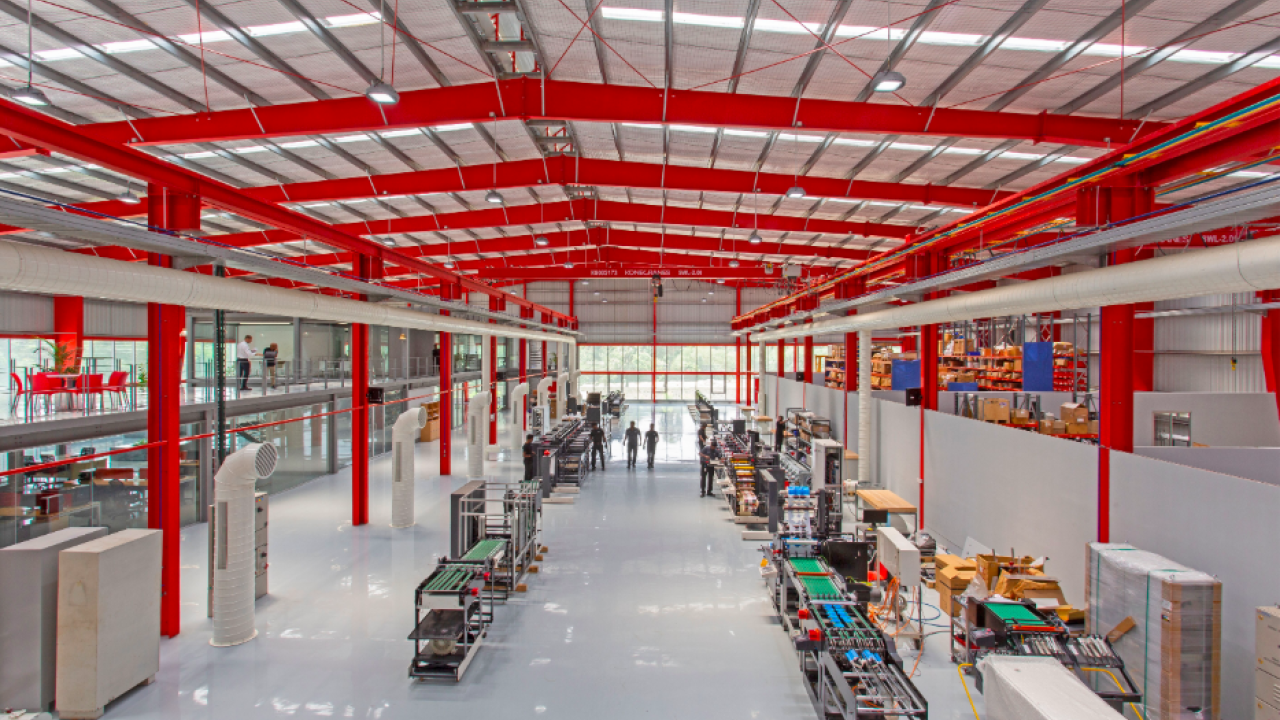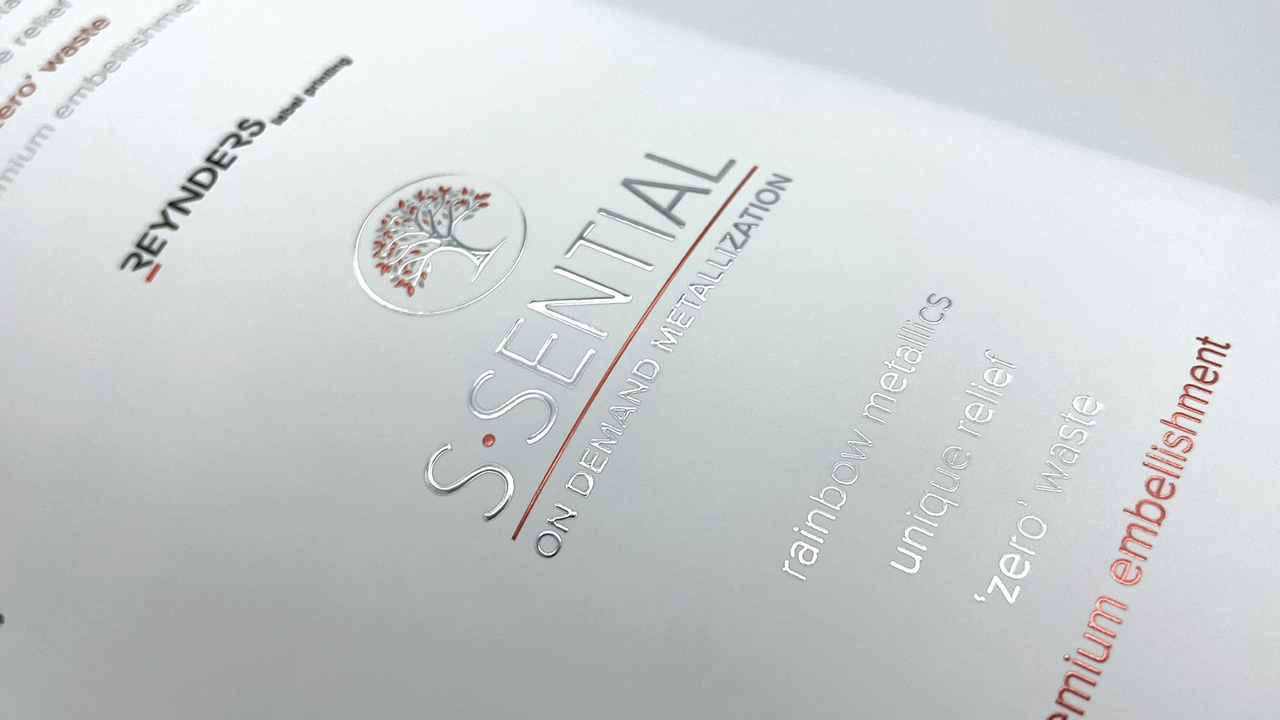Nilpeter India open for global business

The company moved to its current location on the Mahindra World City private industrial estate in Chengalpattu, Chennai, last April, after outgrowing its old plant near the airport. ‘The new factory is three times the size of the old plant but we are already running out of space,’ says Alan Barretto, managing director of Nilpeter India.
The formation of Nilpeter India and the decision to move all FB production to Chennai forms part of a global reorganization of Nilpeter’s manufacturing operations.
Originally the FB press was built in Cincinnati following the acquisition of the old Rotopress operation. The FA-Line presses were all built in Nilpeter’s European headquarters in Denmark.
Nilpeter India, meanwhile, started life as a joint venture between Nilpeter and engineering group Proteck. The first Indian-built FB-3300S press was manufactured in 2009, but only for the Indian market. In 2017 US production of the FB-Line was stopped and the Indian operation upgraded to manufacturer the FB-Line globally. While still supporting the FB-Line, the US factory has been upgraded to produce the FA-Line to exactly the same specification as Denmark. The MO rotary offset press range is exclusively manufactured in Denmark.
FB evolution
Describing the evolution of the FB press line, Alan Barretto says: ‘It has to be an entry-level press offering an attractive and cost-effective supplement to the FA. The latest FB-350 press has to be compatible in tooling and spare parts with more than 1,000 FB-3300 presses installed worldwide. So while we have shortened the web path and added some automation, the print head is still the same for compatibility.’
Despite the FB-Line being marketed as an entry-level machine, it is highly configurable. ‘No two machines we produce are the same,’ notes Barretto. Presses are built in 13in and 16in widths.
Although the core design specifications of the original US-built FB-3300 have been retained, Alan Barretto and his highly innovative engineering team have added their own elements – notably an in-line gravure unit, first seen at Labelexpo India 2014 mounted on a Chennai-built FB-3300S.
‘Nilpeter is already producing a superior gravure unit in Denmark. Indian customers knew all about gravure and its advantages but wanted a lower cost version,’ says Barretto. ‘This is for very specific applications, such as metallics, solvent lamination, first down white on metallics or film, or primer. A typical example is the ice-cream cone industry where we are very big. This involves priming a metallized paper to use water-based inks.’
Other modules incorporated in the FB-Line presses include Stork screen units, hot and cold foil and embossing.
‘We are now looking to integrate other modules from Denmark,’ affirms Barretto. ‘At the last Labelexpo India it was the FP4 rotary flatbed hot foil-embossing unit, and next it will be QC (Quick Change) dies and high speed semi-rotary dies. QC reduces your changeover times and semi-rotary gives reduction in tooling costs, although there are limitations on the repeat range.’
The Chengalpattu plant employs over 70 people and has a current production capacity of 24 machines a year, with six presses on the floor at any one time. ‘We are looking to double that,’ says Barretto, pointing to unused land at the back of the factory. Spare parts for the global FB-Line press base are held onsite, and the next investment will be an automated parts store.
Market trends
As well as shipping FB-Line presses across the world, Nilpeter India handles sales of all Nilpeter presses in India, Nepal, Bangladesh and Sri Lanka.
‘We sell more FA presses than FB presses into the Indian market,’ notes Barretto. ‘We have three FAs coming into India this year, so it’s clear Indian printers are looking in that direction. The applications are mainly for tube laminates and other unsupported film materials. The FA is a very stable press for those jobs. Our customers are more focused now than just saying “I want an 8-color press”.’
Barretto believes hybrid (flexo-inkjet) presses are well-suited to the Indian print market, ‘but the price is stopping people. If we could get the price a little lower or people could invest for the longer term this hybrid press is ideal for the Indian printer. But the cost is in the digital side rather than the flexo side.’
Before Labelexpo India 2018, Nilpeter took part in a series of roadshows organized by Labelexpo India event manager Pradeep Saroha in Nepal, Bangladesh and Sri Lanka. ‘We found a lot of interest particularly in Sri Lanka, where more printers are looking to diversify out of tea production’.
Looking farther afield, Barretto sees big opportunities in east Africa, where most converters are Indian-owned. ‘They tend to buy presses and ancillary equipment from India, whereas in Nepal, they mostly buy from China.’
And looking at the potential of the India market, he remains optimistic, noting that self-adhesive label consumption at well under 1sqm per capita per year leaves huge room for growth.
Stay up to date
Subscribe to the free Label News newsletter and receive the latest content every week. We'll never share your email address.


